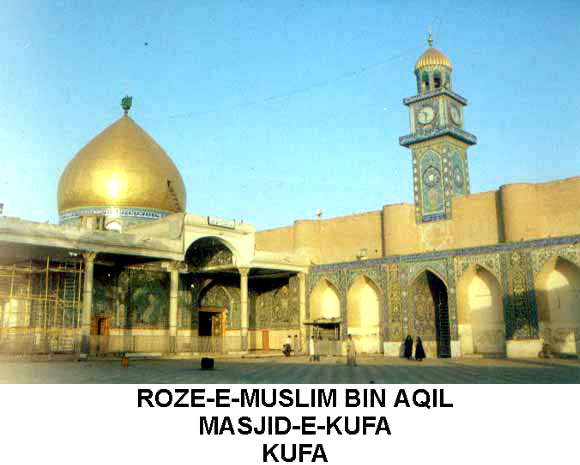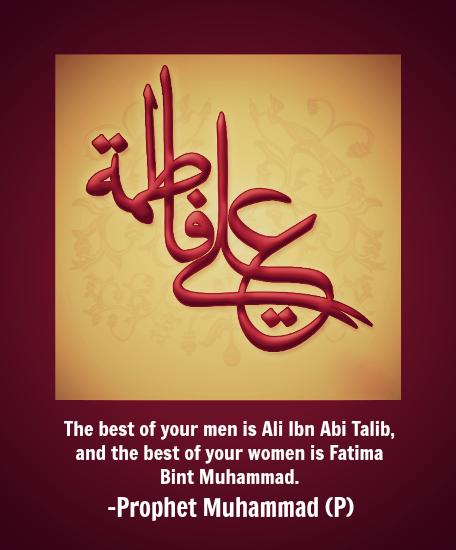
Wiladat-E-Imam Sabhi Momneen to Muabarak Ho
Dr.Mazhar
Naqvi
The
world today celebrated another birth anniversary of Imam Ali Naqi .The
blogger offers his heartiest congratulations to all those who love Prophet Hazrat
Muhammad and his progeny. Imam Naqi
was born in the vicinity of Medina on 15 Zil Hij in 214 Hijri. He lost his
father Imam Muhammad Taqi at the age of 6 years. His mother Janab-e Samana al-Maghribiya was a very
pious lady. She spent her whole life in fasting. The Imam has eulogized her,
saying “ she was one of the ladies of paradise and one of those from 'Ahlul
Haqq' (people of truth).” Like his illustrious father, Imam Naqi also suffered
persecution from the Abbasid tyrants. Al-Mutwakkil surpassed all the Abbasid
Caliphs in harassing and torturing Imam. He moved the Imam from Medina to
Samarra' and put him under house arrest and deployed security men who watched
even his breathes. Yet Imam served the cause of Islam by strengthening and brining
to the peak the institution of Wikala .The insrtitution was started by Imam
Jafar Sadiq. It was subsequently nursed by 7th ,8th and 9th
Imams for protecting the Imami faith from tyrants and anti-Ahle-Bait elements. How
badly an institution like Wikala was needed could only be understand by going
through the merciless persecution of Imamis and the efforts made by Imams to protect
Mazhab-E-Haqqa against the heavy odds.
After
the decline of the Umayyad dynasty, the Abbasids had risen to power by using the name
of Ahle-Bait. They also garnered support from the followers of Ahle-Bait. Then,
Abbasid founding rulers, Saffah and Mansoor, became apprehensive of Ahle-bait’s
followers , thinking that they might one day overthrow them if they realize the fact that
they had used the name of Imam Hussain and Ahle-Bait for the sake of only
power. Therefore, Abbasid rulers resorted to indiscriminate killing of
Imamis and persecuted the lovers of Ahle-Bait
more than Umayyad. Mere suspicion was
enough to put to sword anyone irrespective of the fact whether he was a
follower of Ahle-Bait or not? To overcome such a precarious situation, Imam
Jafar Sadiq had to develop a mechanism
to remain in touch with his followers
without evoking any suspicion from the
rulers and their spies. The Imam started an underground means of communication called
Wikala. The movement facilitated the communication between Imam with his
followers through some trustworthy agents who were not afraid of dying for
undertaking this dangerous task. These agents penetrated into every part of the
Muslim Empire. They guided believers by spreading the true message of Islam through
traditions learnt from the Imams .They also collected khums, zakat and other dues and gifts from the
followers endowed with means and to funnel them to the Imam of the time or use
it in accordance with the instructions of the Imam. These trustworthy agents also
assisted the followers in in meeting their day to day economic, social and religious requirements. They
even pushed followers to earn a post in
the government to further the cause of Imams. Ali ibne Yaqtin is one such
example. Jafar ibn Mohammed al-Ashath and his son Abbas become governor of
Khurasan and Waddah as a sequel to such efforts and they contributed to the cause of Wikala secretly. Imam
Musa Kazim gave further impetus to the system after Imam Jafar Sadiq. Imam Rida
also did likewise. Imam Muhammad Taqi used Wikala to inform his followers who will be his
successor?. Shehr Ibne Ashub mentions in
his Manaquib that when Imam Taqi was
leaving for Baghdad not to come back, he insisted that his agent, Muhammad Bin
Al-Faraj, hand over the revenue collected as khums to Imam Naqi. This was a way
of letting the followers know who was to be their next Imam. “
As
a result, the majority of followers of Imam Taqi accepted Imam Naqi as their Imam despite his young age Imam Naqi added a new dimension to
Wikala movement. Prior to him, Wikala was more or less dependent on the direct
supervision of the Imam. Imam began developing movement in such a way so that
the reliance on direct supervision could be replaced with the monitoring of the
institution by trustworthy community leaders themselves. He prepared such
leaders so as to ensure that Wikala continues to serve its purpose even in the
absence of Imam.
Jassim
Husain in his book “The Occultation of the Twelfth Imam” argues “the growing
strength of the `Wikala network might have been one of the reasons that
prompted the governor of Medina, Abdullah Bin Hakim, to write to Mutawakkil,
the caliph at Samarra, complaining that the Imam was secretly plotting to overthrow the
government. This was the beginning of Imam's second phase of life: his
migration to Samarra.”
Imam
Naqi lived for only 42 years. Half of his life was spent in prison. Despite
these hurdles, he served the cause of Allah very well and impacted the lives of
people from all walks of life. Besides being the centre of knowledge and
learning, he was also known for his piety and generosity. His wisdom , integrity
and character made him so popular that
the rulers envied him. He was loved and respected by the public when he was
alive, and remembered by many after his passing away. Two prominent Sunni
scholars are worth quoting to illustrate the character and accomplishments of
Imam Naqvi. Ibne Katheer portrays in his book ‘Al Badaya Wan Nahaya’ the
personality of the Imam in these words: "The son of Imam Jawad and the father of Imam Hasan Askari was ascetic and pious”. While Ali Bin Muhammad Maliki of "Faslul
Muhimma" says, "...The words of praise, the eulogy and commendations
that one cannot even imagine for others are appropriate for this Imam whose
soul was pure, whose behavior and general conduct with people exuded
brilliance....".(Other references are also available on request).



